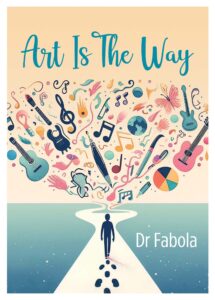
Let’s assume you’re going on a week-long holiday with your family and on the third day, you’re going on a day trip that’ll take you out of the coastal resort you’re staying in, to the nation’s capital. Your family have worked together to create an itinerary for the day trip, featuring all their interests. It’s a whole day’s worth of activities including museums to visit, historic sights to see, exotic cuisines to sample, malls for shopping trips, and landmarks to capture in photos and videos. They’ve presented you with this itinerary for your thoughts and input, and the question they have for you is: how would you improve the itinerary?
Now let’s assume on your holiday, you pick up a recipe for a vegetable curry that’s popular with the locals. It calls for 9 ingredients, but because you’re hoping to make it extra special for a family dinner, you feel the need to modify it. How would you improve the recipe?
How did you attempt to improve the itinerary and recipe in the aforementioned scenarios? What did you suggest to improve the day trip and vegetable curry? Did you choose to add your special interest to the itinerary, or introduce additional ingredients (that you or your family are more familiar with) to the curry?
If you did, it turns out you’ve opted for the popular approach. These are a few examples that reveal the human tendency to improve by addition. Most of us, when faced with a task or challenge to improve something, be it physical or mental, would opt to add to the existing elements. But new research from University of Virginia professor Leidy Klotz, in his book Subtract: The Untapped Science of Less, suggests that more often than not, we might be better off considering what we can take away as opposed to what we can add to solve problems. In other words, sometimes, subtraction may be better than addition, doing less may be better than doing more, and in some cases, doing nothing may be better than doing something.
The problem is, doing less or doing nothing is more difficult than we realise. Societal constructs and institutional policies make it difficult, if not impossible to do less or do nothing. Consider the Cuban Missile Crisis of the 1960s. After weeks of heightened tension between the Americans and the Soviets over the situation in Cuba, in October of 1962, non-lethal attacks on Soviet vessels by the US forces promoted retaliation from the Soviets, who opted to retaliate with the lethal force of a nuclear weapon. There was just one caveat, three senior officers had to consent to deploying the weapon. Enter Vasili Alexandrovich Arkhipov, a senior Russian submarine officer who went against the other two senior officers in refusing to launch a nuclear strike at an American aircraft. He reasoned that there was a possibility they were missing crucial information, and in the absence of this necessary context, such an attack was sure to escalate the situation into a global thermonuclear situation. He opted to do nothing, thus blocking the other two senior officers from launching the strike, and in doing so, his actions prevented World War 3 and the likely nuclear destruction of our species.
This preference for action and addition over inaction and subtraction isn’t unique to military culture in wartime. The same can be said for corporate culture, civil institutions, and pertinent to this post, creative ventures. How often do we find ourselves adding new elements while working on our creative projects? How often do we feel the need to add a new verse or bridge to a song, or a new character to a story, or a new stitching pattern to a scarf, or a new colour to a painting? Addition isn't always the solution. More often than not, subtraction is best, and now and then, doing nothing is the best course of action.

P.S.: My debut non-fiction book, Art Is The Way, and my middle-grade novella, A Hollade Christmas, are out everywhere now. You can get them in all good bookstores and from all major online vendors.